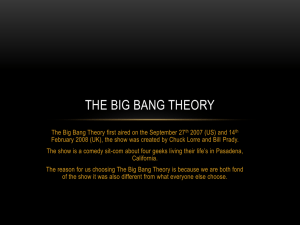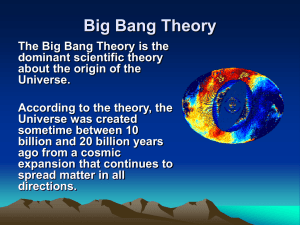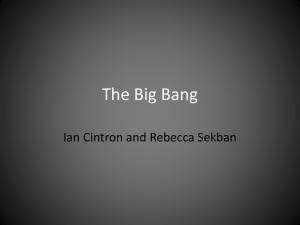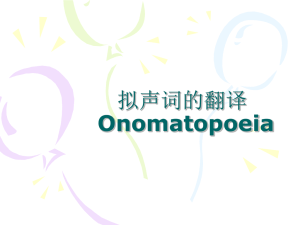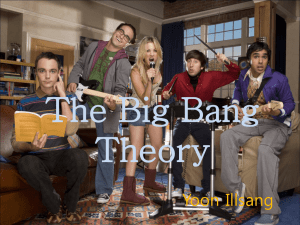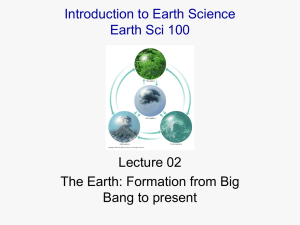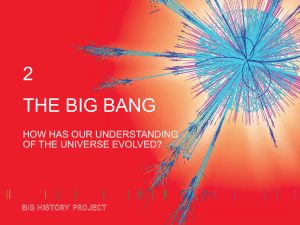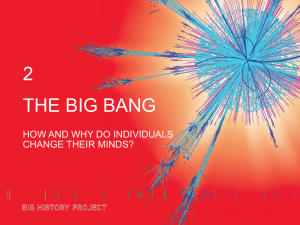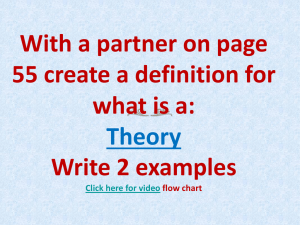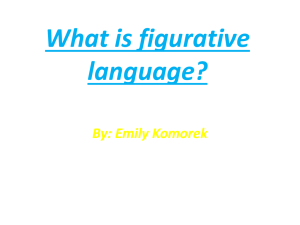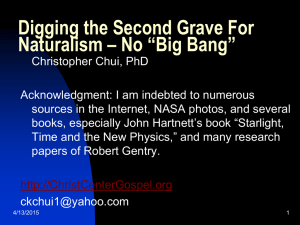Little Red Riding Hood
advertisement
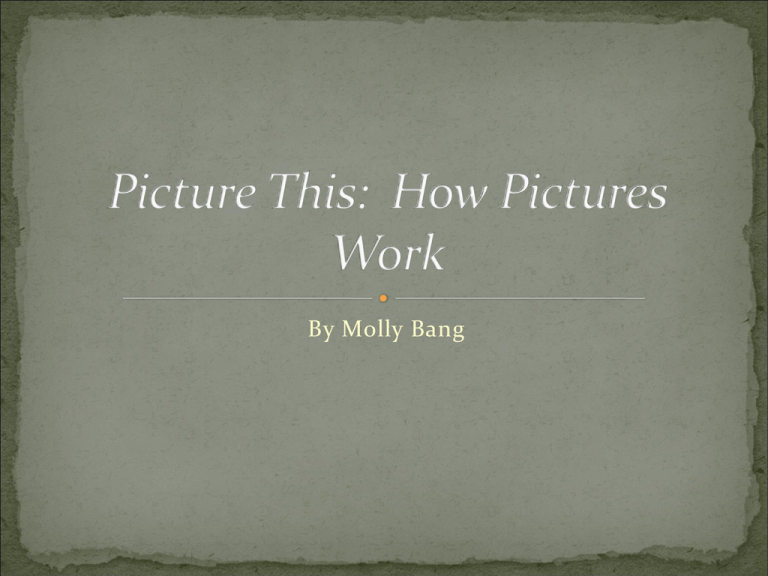
By Molly Bang “We see shapes in context, and our reactions to them depend in large part on that context” (10). If Bang were writing a story about the ocean, the red triangle might be seen as a volcanic island rising from the sea, or a buoy, or a shark’s fin. What the image shows: It isn’t huggable because of its points. It IS stable, because of its wide, horizontal base. It gives a sense of balance, because all of its sides are equal. Red is a warm color, evoking passion, vitality, maybe even danger. At first, Bang represents LRRH’s mother as a larger version of LRRH – a larger red triangle. However, this is problematic, because now, the mother seems more important that LRRH. Also, Bang wants to show that the mother as a less overbearing and more huggable person. The angles defeat that purpose. If Bang keeps the general triangular shape but rounds off the corners, the mother does seem softer, but she still dominates the picture with her size. Bang wonders, “How can I keep her large (since mothers are larger than their young daughers) but give Little Red Riding Hood prominence in the picture” (10)? First, by making the mother purple, she becomes less prominent on the page. Compared to her mother, LRRH seems “perky and bold” (12). Moreover, although making the mother pale blue or pale green would have achieved the same effect of making her seem less prominent, purple is a color most closely related to red on the color wheel. Now, the mother seems “huggable and stable…. She is still motherly, and the emphasis of the picture is now on Little Red Riding Hood as much if not more than on her mother” (12). Bang chooses black for the color of the basket because it stands out and because it keeps things simple. At this point, Bang feels that she has all the colors she plans to use. As she observes, “With these three colors, plus white, I [have] a wide emotional range, and each color [is] distinct from the others” (13). Bang wants to keep things simple, so she starts with triangles scattered on the page. By creating plump triangles, piled on top of each other, Bang creates the sense of spruce or fir trees. However, as Bang notes, “these are too close to the shapes of Little Red Riding Hood and her mother. I [wouldn’t] want to imply that the human beings were turning into the trees or the trees into people (15). Bang tries “long, vertical rectanges of varying lengths and widths, which, in the context of this story represent branchless tree trunks. Because we can’t see their tops, the trees seem very tall” (16). Bang notes that the arrangement of the trees provides a sense of depth. “By arranging the pieces so that the thinner they are, the higher upon their page their bases are placed,” Bang achieves that depth (16). At first, Bang is happy with the image – clearly, LRRH is in the woods. However, Bang is concerned that the picture is not scary enough – after all, this is a story in which a young girl feels alone, afraid, and threatened. Bang asks, “What can I do to Little Red Riding Hood – ONLY to the triangle – to make the picture feel scarier” (17)? By decreasing the size of LRRH, her position in relation to the trees makes her seem smaller and more vulnerable. Bang comments that “we feel more scared when we are little and an attacker is big, because we’re less able to overcome the danger or control it physically” (18). Bang makes LRRH even smaller, both to make her seem less in control and to leave room for the wolf – a figure that will have to be added to the picture. In fact, Bang moves LRRH further up in the picture, as shown on the next slide. Bang notes that “even though the triangle is exactly the same size…, she looks farther away because the trees have established a sense of perspective, of receding space” (20). However, Bang observes that the picture no longer looks as scary. Why? Bang points out that “when Little Red Riding Hood is more distant from me, I don’t identify with her or sympathize with her so much as before” (20). To return a sense of scariness to the picture, Bang tries something else. By tilting the trees, Bang is able to make it seem as if the trees might fall on LRRH at any moment – in fact, it is as if LRRH is trapped “underneath an arch made by two trees” (22). Because the trees are tilted toward LRRH, it pushes “her back toward the left-hand size of the page” (22). As Bang notes, “when I tilt the trees away from here, they seem to be opening a path, leading her up and to the right” (22). At this point, Bang emphasizes two points: Diagonal lines give a feeling of movement or tension to the picture, as with the leaning trees that seem to be falling or about to fall; and, Shapes that lean toward the protagonist feel as though they are blocking or stopping forward progress, whereas shapes leaning away give the impression of opening up space or leading the protagonist forward. By adding three long, black triangles, Bang observes that the scene becomes much scarier. Why? She writes, “partly it’s because they lean so aggressively toward the left, where Little Red Riding Hood is tiny in comparison, and half hidden. Partly it’s becaue of the context: we see the triangles as a wolf” (24). Bang suggests that the fact the triangles are pointy, sharp, dark and big contributes to the scariness, as well. Bang notes that making the Wolf purple seems to connect him to the Mother – which doesn’t jibe with story. The purple certainly makes the Wolf stand out from the rest of the scene. As Bang points out, “the picture has three separate parts made from three different colors, with very little cohesion. It needs to hang together better” (27). Though they are only 7 small triangles irregularly placed, their pointiness makes them seem really scary. Bang writes, “In reality, both the snout and the teeth of wolves are rounded; they are not honed to a sharp point as in these pictures. However, when we are in a scary situation, we see the scary elements in an exaggerated light” (29). Next, Bang asks, “What else does the wolf need in order to look more wolfish” (29)? Bang notes that the diamond-shaped eye seems menacing, and she uses purple at first because it certainly stands out. However, she feels that even with its pointiness, the eye just doesn’t seem scary enough. What does she do next? Bang explains that people have always associated the color red with blood and with fire – two elements that have been consistently present – and filled with danger and promise since the beginning of humanity. On the other hand, purple – though related to red – just doesn’t have those same associations. Bang also notices that by making the Wolf’s eye red, she’s created a connection to LRRH. Bang comments, “I immediately associate Little Red Riding Hood with the wolf’s eye now, in a way I didn’t before. They go together. The eye is looking at her” (32). Bang observes, “the wolf looks stupid now, or maybe happy. Its glance is no longer pointed at its prey. Certainly it is not nearly as evil looking as it was before” (34). Moreover, Bang notes that by making the two triangles so alike, they become less meaningful: “I see them not so much as Little Red Riding Hood and a wolf’s eye now, but more as two red triangles that float up and out of the picture” (34). So Bang returns to the previous image and makes another addition. Bang notes that it appears as if LRRH is being drawn down the path right into the Wolf’s mouth. Bang underscores the fact that “when two or more objects in a picture have the same color, we associate them with each other. The meaing and the emotion we impart to this association depend on context, but the association is immediate and strong” (36). Bang decides that there another touch that will make the picture even more scary. Purple seemed like a soft, gentle color when it was used with LRRH’s Mother, but in this picture, purple implies nighttime. Bang writes, “night feels scarier to us than day because we see well during the day and poorly at night. Darker backgrounds can also imply a storm or overcast weather, neither of which feels as ‘sunny’ as a day of sunshine” (38). Now that Bang has removed the color white from the background, how might she use it to finish off her image? When the teeth are the only white thing in the picture, they pop out more. Bang notes, “white is effective when used with restraint” (40). This demonstration shows how “a picture can be built up element by element to produce specific feelings in the viewer” (41). Given its context, the picture was supposed to be scary, but the elements of color, shape, size, and placement contributed to the effect. Bang concludes: “our feelings arise because we see pictures as extensions of the real world. Pictures that affect us strongly use structural principles based on the way we have to react in the real world in order to survive. As soon as you understand these principles, you will understand why pictures have such specific emotional effects. You will understand how pictures work” (41).
